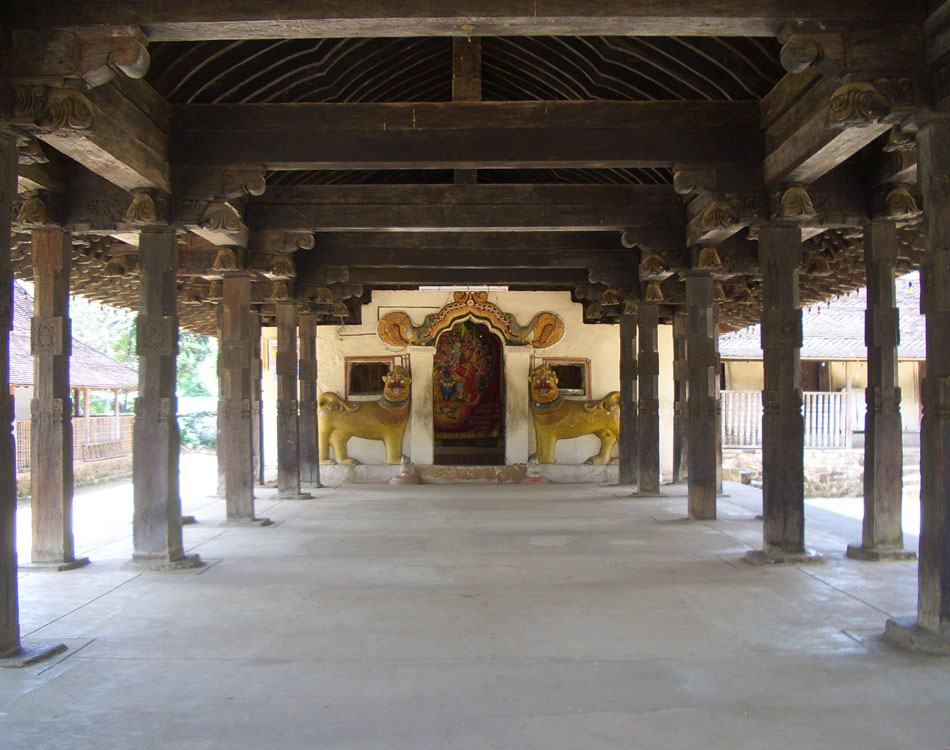VISIT TO THREE TEMPLES
Embarking on a heritage exploration in Kandy, Sri Lanka, presents a memorable journey to three ancient temples: Embekke, Lankathilaka, and Gadaladeniya, all constructed in the 14th century before the full establishment of the Kandyan Kingdom. Embekke Temple stands out for its intricately carved wooden pillars, showcasing various motifs such as peacocks, swans, wrestlers, dragons, dancers, horsemen, and soldiers. Dedicated to Kataragama deviyo and Devatha Bandara, the temple's Drummers' Hall is a highlight, boasting splendid wood carvings and a high-pitched roof. Situated in Medapalata Korale of Udunuwara, reaching Embekke is convenient from the Colombo-Kandy main road at Pilimathalawa, with clear signposts guiding the way. The temple's historical significance is underscored by the possibility of repairs during the reigns of Sinhalese Kings of Kandy, preserving exemplary Sinhalese art and architectural features.
Moving on to Lankathilaka Temple, one of the Gampola Kingdom's main buildings, visitors encounter a structure of unparalleled beauty and solidity. Whitewashed with sweeping roofs, this temple built on the great rock of Panhagala exudes a powerful presence. Constructed by King Buvanekhabahu IV, its architectural grandeur reflects the late Medieval monarchs' appreciation for the arts despite challenges in exerting military strength across the island. Impressive makara thoranas guard the primary gateway, adorned with large chimeras, while lion statues flank the arched entrance, offering insights into the region's religious and secular architectural heritage. Proper preservation of Lankathilaka Temple is crucial for reconstructing other historical sites, ensuring the conservation of Sri Lanka's cultural legacy for generations to come.
Finally, Gadaladenyia Vihara, also known as Saddharmatilaka Vihara or Dharma Kirthi Viharaya, stands as an ancient Buddhist temple boasting Dravidian architectural elements infused with Sinhalese styles. Built in 1344 under the patronage of King Bhuvanekabahu IV, the temple reflects a harmonious blend of Hindu and Buddhist traditions, evident in its design by South Indian architect Ganesvarachari. Located in Pilimathalawa, approximately 12.5 km west of Kandy, Gadaladenyia Vihara is renowned for its rock temple construction, showcasing historical inscriptions and housing celebrated scholarly monks throughout history. The temple's preservation efforts, initiated by King Vira Parakrama Narendra Sinha, highlight its significance as a cultural and spiritual landmark, perpetuating the teachings of Weliwita Sri Saranankara Thero's pupils who have safeguarded its heritage for centuries.
Day Tours
See more
See less
Round Tours
See more
See less
Things To Do
See more
See less

